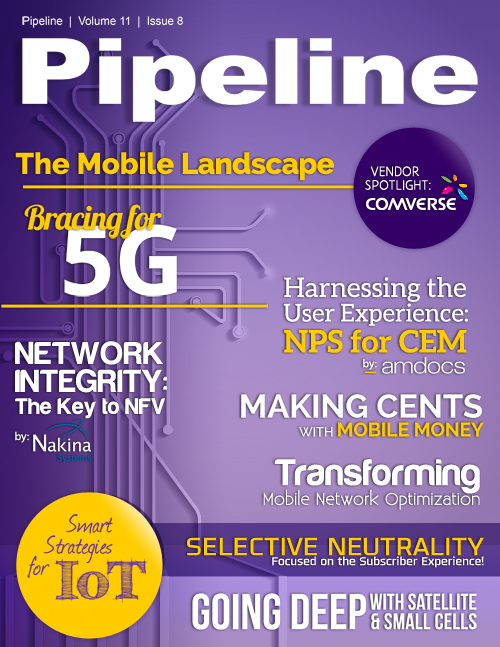Bracing for 5G
User and network requirements
Various development groups and industry consortiums have outlined the essential user requirements that they predict will typify 5G. A good example comes from 4G Americas, a wireless industry trade association that counts AT&T, Alcatel-Lucent, Telefonica, Ericsson, Huawei, T-Mobile and many other leaders as governing board members.
Extreme improvements in energy utilization and battery life: In the hyper-connected world, billions of unattended connected devices that must function will able to be controlled remotely. While the remote management piece is rather well defined by M2M platform players, energy consumption models are still being ironed out. The prevailing thought is that IoT devices must have batteries or power systems that last ten years.
Per-user data rate and latency optimization: It is estimated that by 2020, there will be a new class of data-rate-hungry services with low latency requirements. Research has shown that applications in the future, such as augmented reality, 3D gaming and “tactile internet”, will require a 100x increase in achievable data rate compared to today and a corresponding 5x to 10x reduction in latency. Therefore, 5G networks must be designed to meet these data-rate and latency requirements.
Resiliency: Legacy PSTN networks will be “sunset” before 2020. Therefore, 5G networks will increasingly be used as the primary source of communication as a replacement network for PSTN after it is phased out. They also will support emergency communications and public safety, including during and after disasters. A key requirement for such use cases is for the network to be robust, reliable and resilient.
Mobility: In the future, 5G will be expected to support very-high-mobility scenarios, such as high-speed trains and commercial jets, as well as scenarios with low to no mobility for end devices. The technology, therefore, should be able to cope efficiently with such extreme situations by providing mobility on demand based on each device’s and service’s unique needs and capabilities.
Seamless user experience: Current cellular systems provide very high peak quality, such as very high peak data rates. However, the quality often varies substantially over the coverage area. For example, the achievable data rates can be substantially lower for devices far from the base station site or in indoor locations. This 5G wireless access should deliver a much more consistent user experience, irrespective of the user’s location. In other words, the achievable quality of experience (QoE) should be the key quality indicator, where achievable quality should be defined as the quality experienced with perhaps 95 percent probability, rather than, for example, peak data rates.
Context aware networking: In the 5G world, it becomes increasingly important for the network to provide the correct resources to meet the unique needs of each application and device. This is possible only if the network is context-aware and hence can dynamically adapt to meet those needs. Context includes network awareness, such as the availability of alternative multi-RAT, small cell and macro networks of varying capabilities, application and device awareness with associated service requirements, subscription context such as operator preferences for providing service and subscriber analytics.
From these requirements, we can deduce network requirements. According to the GSMA and the 5GPPP, the 5G network will be defined, in part, by the following attributes:
- No theoretical maximum, but 1-10Gbps connections to end points in the field.
- Signal latency of 1 millisecond end-to-end, round trip.
- An increase of bandwidth per unit area of 1000x.
- A 100x increase in the number of connected devices.
- The perception of 99.999% availability.
- The perception of 100% coverage.
- A 90% reduction in network energy usage.
Moving from these service-defined requirements, we can focus on the network technologies and that will enable 5G.




















